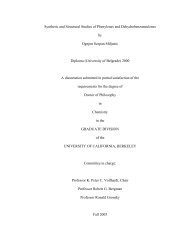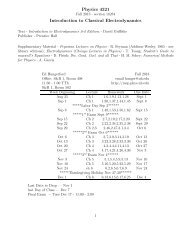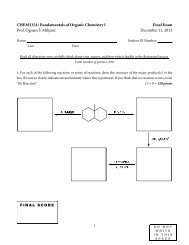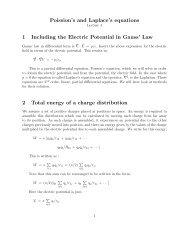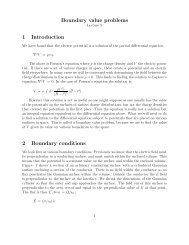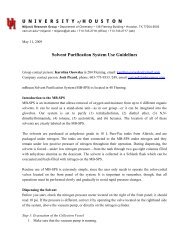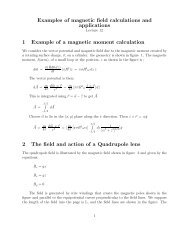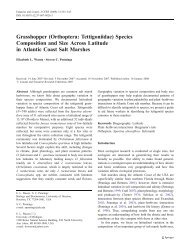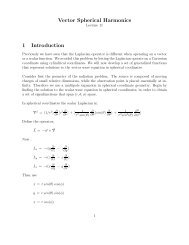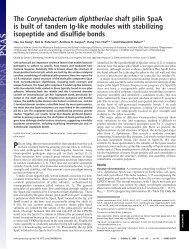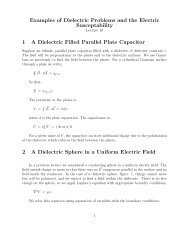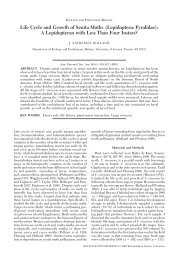Scattering 1 Classical scattering of a charged particle (Rutherford ...
Scattering 1 Classical scattering of a charged particle (Rutherford ...
Scattering 1 Classical scattering of a charged particle (Rutherford ...
Create successful ePaper yourself
Turn your PDF publications into a flip-book with our unique Google optimized e-Paper software.
q/2vvq/2φ oFigure 6: Radiation from sets <strong>of</strong> charge rotating in a circle∆ρ ∆p ≈ with ∆ρ = bb min (cut <strong>of</strong>f value due to screening) = /2Mv = /Q max9 Radiation and coherenceWe have seen that an accelerated charge radiates energy. Suppose we set 2 charges in symmetricpositions on a loop and let them spin around the z axis as shown in figure 6. Thisresults in radiation because the charges are accelerated. Now suppose we consider the loopfilled with a continuium charge distribution that rotates. Contrary to intuition, there isno radiation. This occurs because <strong>of</strong> coherence <strong>of</strong> the radiation from each <strong>of</strong> the elementalcharge distributions cancels the radiation field. We see this as follows. The charge distribution<strong>of</strong> the two elements as shown in the figure can be written;δ(r − a)ρ = (q/2)a 2 δ(θ − π/2)[δ(φ + φ 0 ) + δ(φ − φ 0 )]We rewrite the charge per unit length so that we can add additional symmetric units <strong>of</strong>charge;λ =q(n + 1) πa δ(φ − πk/N − φ 0) k = 0, 1, 2, · · · , N − 1All <strong>of</strong> the charge elements rotate with the frequence ω. The charge density is then written;ρ k =q δ(r − a)(n + 1)π a 2 δ(θ − π/2) δ(φ − πk/N − ωt)13




